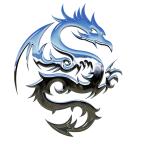FireShot Capture 9388 - Star Wars’ Luke Skywalker Inspired Sc_ - https___screenrant.com_star-war.jpg
Luke Skywalker has inspired real-life scientists to create artificial skin capable of replicating the sensation of touch. The Star Wars saga has been a cultural juggernaut since the first movie debuted in theaters in 1977. The original trilogy focused on the story of Luke Skywalker and his quest to learn about the Force and redeem his father. This storyline has inspired countless other films, books, series, and fan works; references to it have touched every corner of popular culture.
Possibly the most iconic scene in any Star Wars work comes in the 1980 film The Empire Strikes Back. During a duel with Darth Vader, Luke loses his hand and learns that Vader did not kill his father, but that Vader is in fact his father. Luke narrowly escapes the encounter and goes on to get a new, artificial hand to replace the one that he lost in the duel. Though robotic, the new hand appears to look and function just as his human hand did. Now, forty years after the film's original release, the Star Wars tech has inspired scientists in this galaxy.
According to Reuters, researchers in Singapore have developed artificial skin aimed to help those with prosthetic limbs regain the sensation of touch, a development sparked by Luke's prosthetic hand in the Star Wars franchise. Though the skin, called the Asynchronous Coded Electronic Skin or ACES, is still in its experimental stage, the invention has generated excitement from the medical community. The team at the National University of Singapore report that the invention can process information even faster than the nervous system, and can recognize between twenty and thirty different textures. While human skin can only determine texture by moving across a surface, ACES is able to immediately determine texture with a single touch.
FireShot Capture 9391 - Star Wars’ Luke Skywalker Inspired Sc_ - https___screenrant.com_star-war.jpg
While this development is certainly promising, it's hardly the first time that scientists have looked to Star Wars for inspiration and inquiry. The United States' Strategic Defense Initiative of the 1980s was widely referred to as the "Star Wars Program." At the same time, the franchise has been credited with predicting the use of current technology like holograms and artificially intelligent robots. The series has also led to the study of the in-universe technology, including the web series Science and Star Wars, as well as an episode of Mythbusters exploring the feasibility of the galaxy's tech.
The goal of Star Wars and other science fiction works like it has never been to accurately predict technology, but rather to examine how human beings might respond to it. Even if Luke's artificial hand was simply included in the original trilogy as a plot device, that plot device planted a seed in a real scientist's mind that blossomed into a potentially life-altering invention. George Lucas may not have created the technology of Star Wars with the intention to change science on Earth, but this development proves once again that he has. As long as Star Wars remains the cultural force that it is, it's safe to assume science will continue to look towards the franchise for inspiration.
Torrent Invites! Buy, Trade, Sell Or Find Free Invites, For EVERY Private Tracker! HDBits.org, BTN, PTP, MTV, Empornium, Orpheus, Bibliotik, RED, IPT, TL, PHD etc!
Results 1 to 1 of 1
Threaded View
-
08-04-2020 #1Super Moderator





















- Reputation Points
- 915622
- Reputation Power
- 100
- Join Date
- Dec 2016
- Posts
- 22,758
- Time Online
- 509 d 4 h 24 m
- Avg. Time Online
- 3 h 58 m
- Mentioned
- 2782 Post(s)
- Quoted
- 806 Post(s)
- Liked
- 16937 times
- Feedbacks
- 381 (100%)
Star Wars’ Luke Skywalker Inspired Scientists To Create Artificial Skin
WHAT WE DO IN LIFE ECHOES IN ETERNITY


 1Likes
1Likes LinkBack URL
LinkBack URL About LinkBacks
About LinkBacks





 Reply With Quote
Reply With Quote





